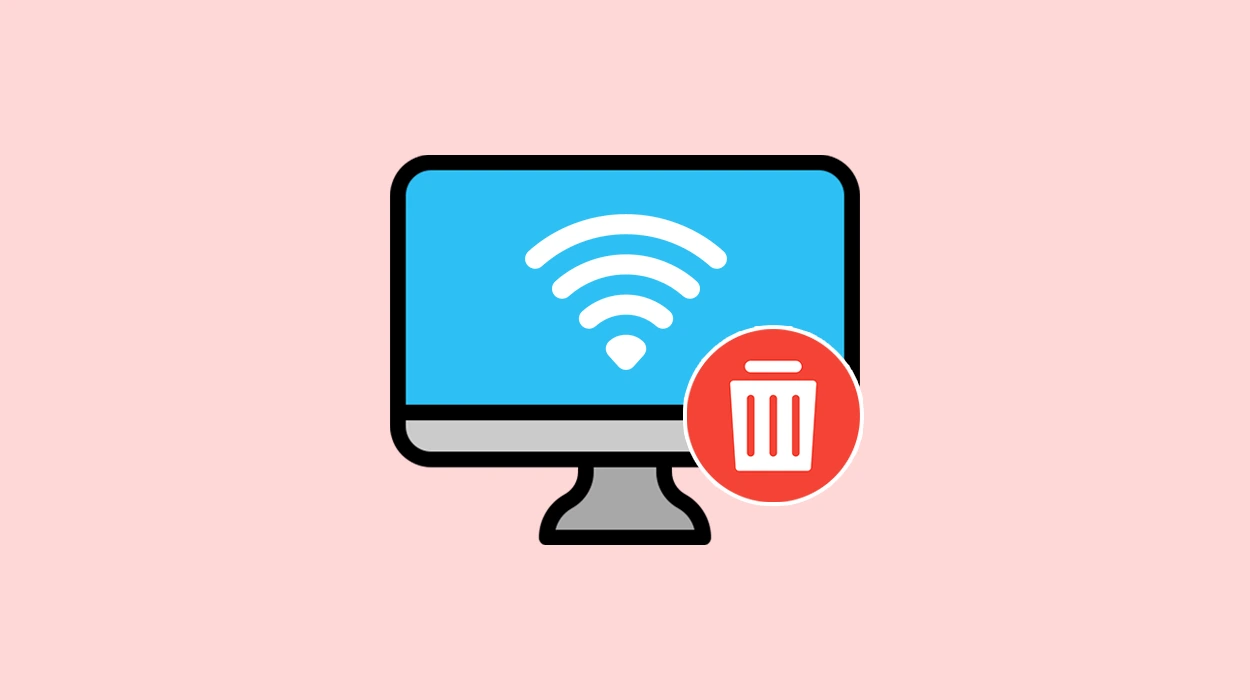If your Wi-Fi suddenly disappeared from your laptop or PC, don’t worry – I’ve got a few simple and reliable solutions that should help. This issue often happens out of nowhere or after certain changes. For example, it can occur after installing or updating Windows, replacing hardware, or updating drivers or software.
In this case, Wi-Fi is completely missing. There’s no Wi-Fi toggle, no Wi-Fi section in the Windows settings, and no Wi-Fi adapter in Device Manager. But before this happened, everything was working just fine. In Windows 11, the issue typically looks like this:

This problem can happen on any laptop (Dell, ASUS, HP, Lenovo, Acer, MSI, etc.) or desktop PC. I’ve personally had to recover missing Wi-Fi adapters on both Windows 11 and Windows 10, so the issue is not version-specific.
The solutions I’ll walk you through below are tested and work in real-world scenarios. But they only apply if your Wi-Fi was working and then suddenly disappeared from Device Manager, either on its own or after making changes. If your device never had Wi-Fi to begin with, that’s a different issue and may require different fixes.
Force Shut Down Your Laptop or PC
This is one of the most effective ways to bring back a missing Wi-Fi adapter. All you need to do is perform a forced shutdown and restart the device.
Make sure your laptop or PC is turned on. Save all open documents and close windows. Then, press and hold the power button for about 10 seconds, until the system completely shuts down.

Wait about a minute, then power the device back on. That’s it – your Wi-Fi adapter should reappear in Device Manager, and Wi-Fi should start working again.
Scan for Hardware Changes in Device Manager
Right-click the Start menu and open Device Manager. Then click the “Scan for hardware changes” button.

Windows will search for connected hardware and may detect and restore the missing Wi-Fi adapter.
Update the BIOS
Keeping your BIOS up to date is crucial. On newer laptops especially, a missing Wi-Fi adapter can often be caused by an outdated BIOS, especially after a Windows or driver update. Here’s how to update it:
- Go to the official website of your laptop or motherboard manufacturer.
- Locate the Support or Downloads section, or use the search bar to enter your device model.
- Find the BIOS section and download the latest version.
- Save the update file to your computer and run it to begin the update process. For example, here’s what the BIOS update download page looks like for my Dell XPS 15:

- Just launch the downloaded file and follow the on-screen instructions.
Reset BIOS/UEFI Settings
Warning: Resetting BIOS/UEFI will erase any custom settings. If you’ve changed specific options, you’ll need to reconfigure them afterward.
Step 1: Enter BIOS/UEFI
On most devices, this is done by pressing Del, F2, Esc, or F10 during startup.
Step 2: Restore Factory Settings
Look for a setting like “Setup Default”, “Reset to Default”, “Load Defaults”, or “Factory Settings”. Select it and confirm the reset. You can also try pressing F6 to reset defaults.

After the reset, check if the Wi-Fi adapter reappears in Device Manager and whether Wi-Fi is working.
Additional Solutions
If the methods above didn’t solve the issue, try the following:
- Reset network settings (you can do this easily in Windows 11, 10 settings).
- Download and install the latest Wi-Fi driver for your laptop or adapter from the manufacturer’s website.
- For desktop PCs, make sure a physical Wi-Fi adapter is installed. It might be integrated into the motherboard, or connected via USB or PCI slot.
- Try physically disconnecting and reconnecting the Wi-Fi module (this usually involves opening the laptop).
- If your USB Wi-Fi adapter disappears, check if it works when plugged into another computer.
- If your Wi-Fi adapter goes missing after a while – especially under heavy network load or while gaming – it might be caused by overheating. Check the temperature of your CPU, motherboard, and other components.
- Install a second copy of Windows or Linux to see if Wi-Fi works in another OS. Ideally, use the OS recommended by your device manufacturer and install the drivers they provide.
Sometimes, the Wi-Fi module simply fails. In such cases, replacement is the only option. If the issue is on a laptop, things can get a bit more complicated, since checking or replacing the internal Wi-Fi module usually requires disassembling the device. Alternatively, you can use a compact USB Wi-Fi adapter.




